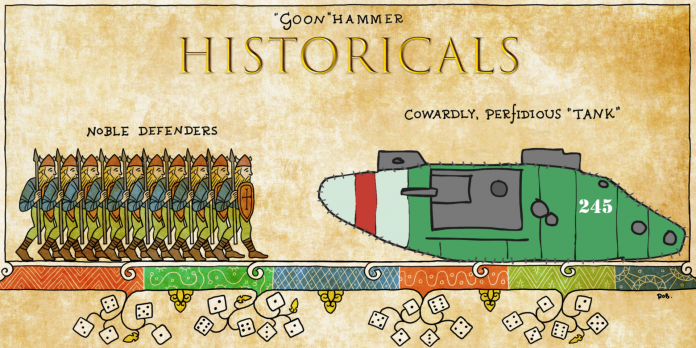Summer 2024 marks the 110th anniversary of the cataclysmic events that led to World War I. Despite being one of the most pivotal events of the 20th century, WWI has not achieved nearly as much representation on the tabletop as its sequel, and we at Goonhammer hope to shine a little light on this fascinating period of history. Therefore, Goonhammer is pleased to present our Guns of August summer event. Every Monday, from June to August, will see a new article on wargaming the Great War. Expect painting guides, model reviews, interviews, ruleset spotlights, and more!
Today we’re talking to Alex Sotheran, creator of the Storm of Steel youtube channel and author of the upcoming Chain of Command: Great War. The Storm of Steel channel covers a wide variety of tabletop subjects, but with a particular interest in all things World War I. I highly recommend it!
Alex has been hard at work on a new entry in the much-beloved Chain of Command series by Too Fat Lardies, this one focusing exclusively on the Great War. Without further ado, let’s begin our chat with Alex about his new ruleset, World War I, and wargaming in general.

Wargaming the Great War
Goonhammer: Alex, you’ve been at the forefront of championing the Great War as a time period for wargaming. We’ve recently jumped on the bandwagon as well, with an article extolling the Great War as an overlooked time period for wargaming. WWI was one of the largest and most important conflicts in our history – why do you think this conflict isn’t more popular with wargamers?
Alex: I think this is an issue that has been prevalent throughout all of wargaming’s history to be honest. I have an old Don Featherstone introductory book for wargaming from the 1970/80s and although all other periods are given ample room, the First World War chapter gets about ten pages and is pretty much skipped over. So it’s nothing new at all.
I think there is something underlying that comes from the misunderstanding of the war in popular culture, i.e. that it was just brave men engaging in futile attacks against machine guns for four years whilst generals ate caviar in a chateau. This view cannot be further from the truth to be told, and is easily dismissed just by reading some modern writing on the war, but it is enduring and something that I recently experienced at my local club when chatting about gaming the FWW. Some of the guys were saying there’s no point playing anything after 1914 ‘cos everyone just gets shot with machine guns.
Also there is the idea that making trench systems on a tabletop is impossible without bespoke terrain boards and I think this also is a huge factor in putting people off. Although a bespoke table looks amazing, there are numerous trench systems for sale these days, so this issue is easily overcome, but it seems to endure, unfortunately.
These are just two examples off the top of my head, and they are not the only reasons, but I think a general misunderstanding of the war and how it was conducted is the main one when it comes to wargamers not trying the period out. It’s a real shame, because if people begin to explore the period they’ll find a hugely interesting war to wargame.
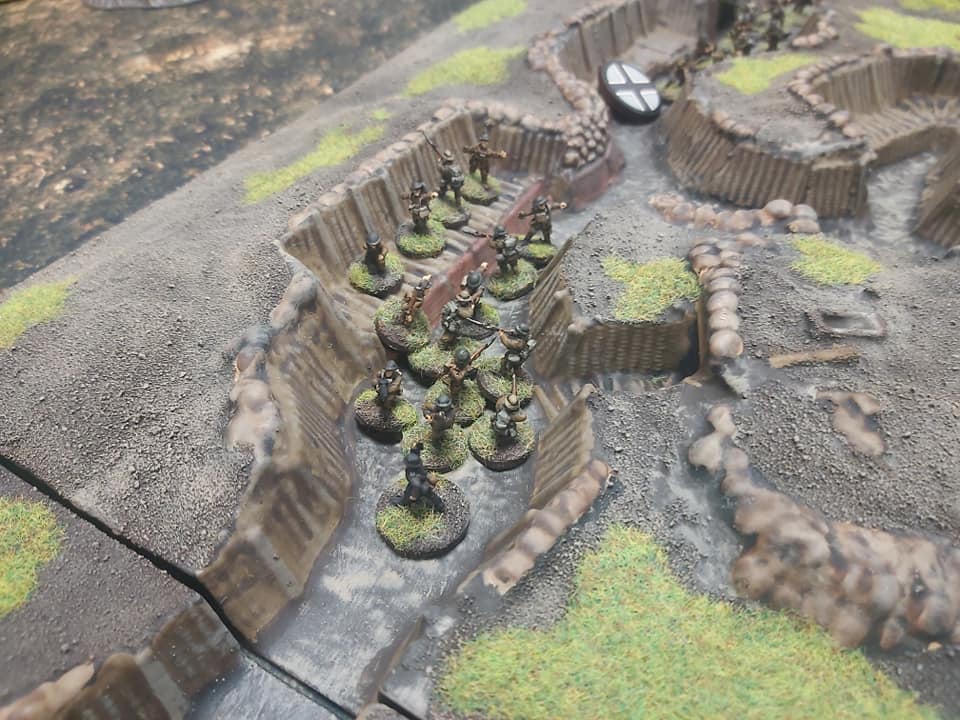
GH: An opinion I’ve seen commonly expressed is that only the beginning and end of the Great War (when maneuver warfare was possible) are suitable for wargaming, while the stalemate years of the Western Front are either too difficult, or too boring to simulate. Personally, I think the puzzle of deciding how to build or crack defensive lines could be fertile grounds for wargaming, if the player is given the right tools. Where do you stand on this debate?
Alex: Yeah, 100% this is one of the most enduring myths that I have come across when chatting with people about gaming the FWW. And it is just that, a myth. There are plenty of examples of battles where movement was a key factor, even with attacks against trench systems.
Let’s take one general example of the fighting in the year 1917, the Allied armies were undergoing a revolution in military affairs with the reorganisation of the platoon, first the French did it, but the British followed quickly and produced the training pamphlet SS143, which basically makes the platoon its own autonomous unit, providing the manoeuvre element with the bombers and rifles sections, machine gun support with the Lewis gun section and artillery support with the rifle grenadier section. This allowed the junior officers to take more control of their particular part of the battlefield and gave them much more autonomy than had previously happened. This development, and just learning how to use the new platoons, is fertile ground for the skirmish wargamer.
On the other side of the wire, the Germans were busy reorganising their defence doctrines, instead of having large bodies of men manning the front line trenches, they began utilising defended shell craters and bunkers to provide interlocking fields of fire whilst also having a defence in depth approach. It’s basically an arms race between attacker and defender but it allows the wargamer to explore just one facet of the fighting that developed during the war.
Even within that year there are two battles which stick out that both offer particular challenges to the gamer; the Third Battle of Ypres (more commonly known as Passchendaele) and the Battle of Cambrai. Both are fought in the later part of the year but both are wildly different in how they are conducted and the nature of the fighting, despite both being British (and Commonwealth) attacks against German defences.
Third Ypres is later typified by the bad weather, high water table, underlying clay soils and shattered drainage systems making the ground waterlogged and turning the battlefields into a quagmire. There were sound military reasons for the operations in Flanders, I’ll not go into them here, but nature quickly turned against the attackers. Most of the images you see in books and documentaries of men struggling through mud come from Third Ypres, but that was the exception and not typical of the fighting elsewhere.
Cambrai was chosen as a place for attack due to the relatively undamaged ground allowing for the first mass use of tanks to take place. The underlying chalk of northern France allows for good drainage naturally, so Cambrai wasn’t the sea of mud that typified Third Ypres. In both battles the British army advanced several miles, at great cost in human life, it has to be said, whilst inflicting heavy casualties on the German army. At Ypres, you have the challenge of pushing on through the abysmal terrain, whilst at Cambrai you have the challenge of keeping the tanks operating as support elements and keeping the all arms co-operative battle going. By the second day about half the 350 tanks involved at Cambrai had either broken down or had been destroyed by German fire. The law of diminishing returns!
I’ve already mentioned how the German army was adapting to the challenges, but we also see during Cambrai and the huge counterattack of the 30th of November the first use of their new stormtrooper tactics. These units would become even more important in the Spring offensives of the following year, but at Cambrai we have a chance for the wargamer to get to grips with this new method of fighting.

Chain of Command: Great War
GH: As anyone who follows your excellent channel knows, you’re a big fan of Through the Mud and the Blood and Chain of Command. What inspired you to jump into the fray and begin working on your own WWI ruleset?
Alex: It was inspired by a visit down to Lard Island at the invitation of Richard Clarke. He asked me if there were any particular games I wanted to play and I suggested something from the Chain of Command Far East Handbook (which was still being playtested at that point) and something using Cocking Up the Mud and Blood (that can be found in the TFL Christmas 2014 special and their Play the Game FWW supplement). Rather than using Cocking Up directly, Richard had quickly put together a few ideas for gaming the FWW with CoC and myself and Nick Skinner were to guinea pig them.
I put out a video about my trip and included a general interview with the two guys about FWW wargaming and following that, a few people asked Richard about it, in particular during a live stream he’d put on Lard TV. During that stream he suggested that he was too busy to pursue it properly but mentioned that he’d be happy if I wanted to follow it up. So I did.
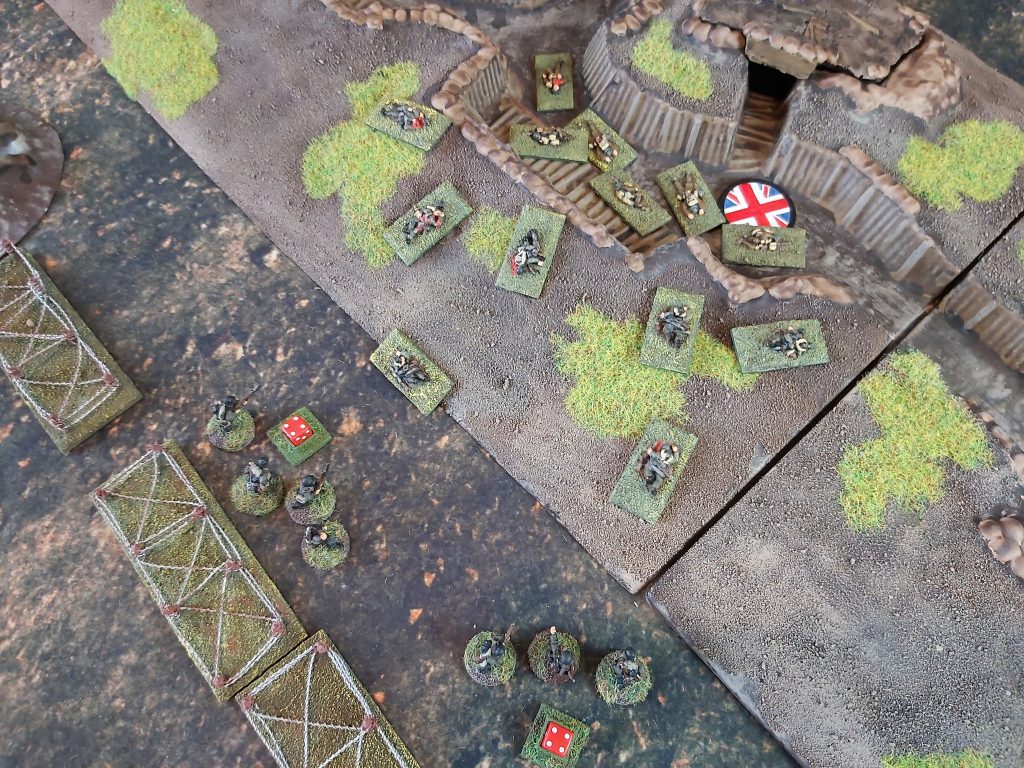
GH: Tell us a bit about Chain of Command: Great War. Is it a stand-alone ruleset, or an expansion for Chain of Command? For veterans of Chain of Command, what kinds of changes can they expect from these rules?
Alex: Currently it is a stand alone ruleset, but the state I have it in at the moment means it borrows heavily from both Cocking Up and Chain of Command. This is mostly where there are gaps that I have yet to develop rules around. I am still at the stage of working out mechanics and what to put in and what to leave out.
For people who have played CoC, there will be a lot that is familiar, but also a lot that is different. I have introduced an abysmal terrain rule, which is to be used on particular battlefields, like Third Ypres, where players roll a dice whilst moving. The result of which will affect how they are able to move. It’s a little like the jungle dice in the Far East Handbook, it’s not a movement dice in itself, but just another challenge for players trying to cross the broken terrain.
As artillery was incredibly important in the FWW, I am currently working out rules as to how to model that on the tabletop. I see many rulesets that treat first war artillery as a single shell landing on the battlefield, where this wasn’t the case. Artillery was subject to fire plans and involved many tubes firing at once in the same area. It also changed hugely over the years of the war and it’s something that I am grappling with, whether to have it as a presence in the game or as something abstract and pre-game. Only play testing the various options will winkle out this decision.
Another major addition is a game within a game based around trench raiding. Trench raids are the most common form of FWW wargaming that you see, but once again, there is a huge misunderstanding about them. They could involve a few men sneaking into the enemy lines at night which is the usual way they are played on the tabletop, but they could have also involved entire battalions conducting a local attack supported by artillery and aircraft. They were still called trench raids. In CoC Great War I’ve gone for a platoon level attack where the objective is randomised and could be such things as nabbing a prisoner for information, causing mayhem or blowing up a strongpoint. Also, the forces involved are randomised, to replicate the volunteer nature of many of these raids and to give the player the challenge of playing with the hand you’re dealt and ensuring each game is different.
I’m hoping the trench raids will be playable within an hour or so, meaning on a typical club night you can play a couple of games, with players swapping sides to see who does best.
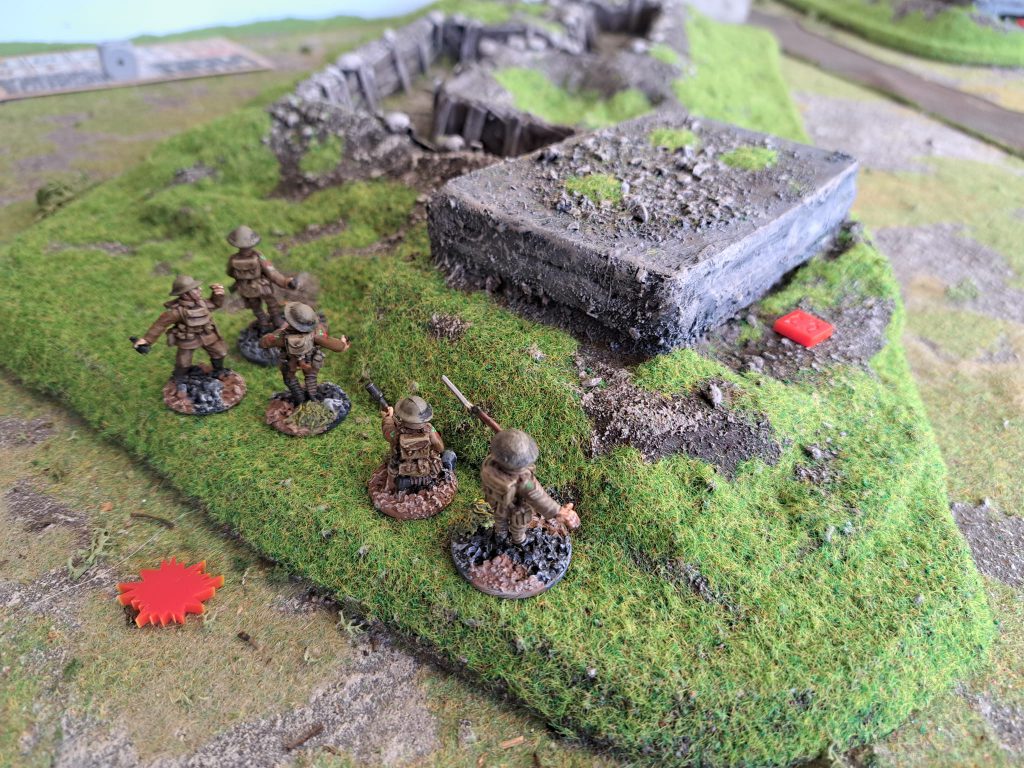
GH: When setting out to write CoC: The Great War, what were your objectives in terms of what you wanted the ruleset to achieve?
Alex: Initially, I wanted to expand on the excellent Cocking Up supplement which is now a decade old and just take some of the ideas that Richard has added in during my trip to Lard Island. I felt that there was a lot more that could be done with Chain of Command that would give me the great fun I have playing Through the Mud and the Blood, but with a modern direction in terms of game mechanics.
I’d like it to be challenging and fun for the players, but also deeply rooted in the history of the war. I have seen so many rulesets recently that appear to rely on Blackadder Goes Forth or Wikipedia for their historical sources and I feel that there is a disservice being done to the men who fought in the war by this.
I think it would be nice for the rules to act as a springboard for people wanting to know a bit more about the war and challenges faced by the men from the privates all the way up the general staff.
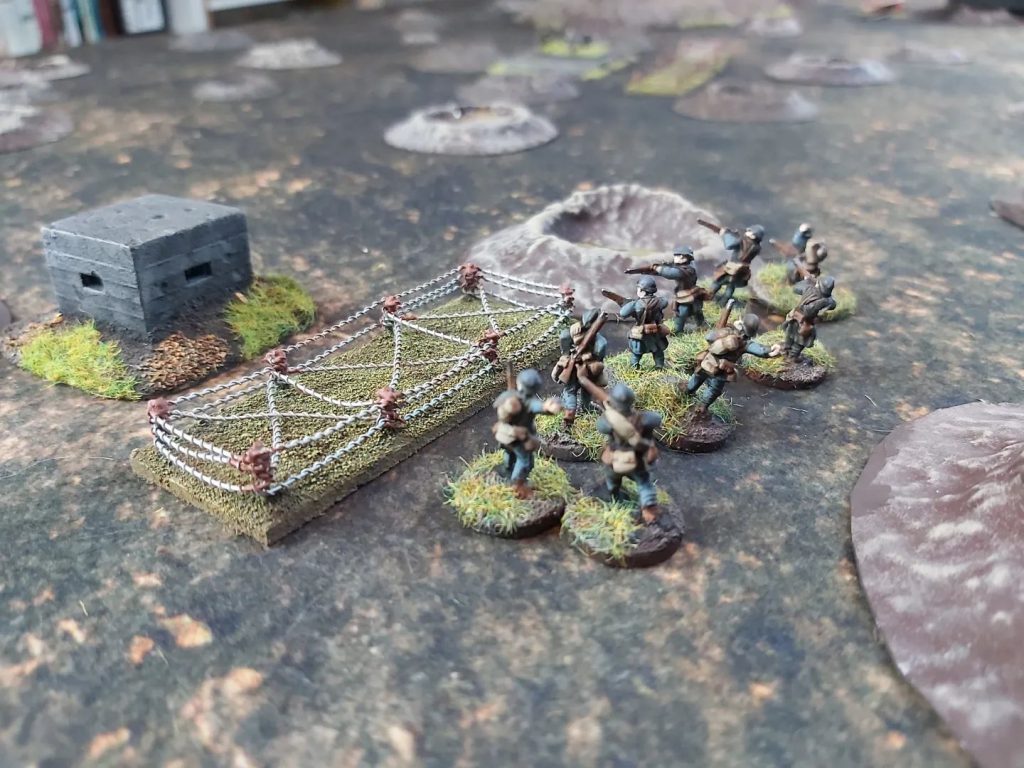
GH: With the exception of If the Lord Spares Us, previous Too Fat Lardy WWI offerings have largely focused on the Western Front circa 1917-1918. What theatres and time periods do you intend to cover in your ruleset?
Alex: At the moment, the rules cover the same time and geographical period, that is, 1917-18 and the Western Front. This is simply because this is the part of the war I have studied the most and am more comfortable with but also because it is the period of massive change and innovation on both sides of the wire, as mentioned before. It was the time that armies were learning to become modern armies and incorporating all the new technologies into all arms cooperative operations.
Because the war was so different in the different theatres it would be unmanageable to include everything under one set of rules, without it running to hundreds of pages long. So by focussing initially on one part it allows me to explore that in more depth. I would like to add more supplements and additions for the early war and other theatres beyond the Western Front but that is something for the future…

GH: What aspect of warfare in the Great War has been a particular focus for your ruleset?
Alex: As I said, the main focus has been on the Western Front as a theatre, right down at platoon level, where the junior officers and NCOs were incredibly important in either keeping an attack moving forward or organising the defence of a stop line.
I’ve also tried to get artillery rules into a workable state. This is quite difficult as artillery was so prevalent that not including it or watering it down to the usual wargaming single shell firing just wasn’t going to cut the mustard for me. How it can be replicated on what is essentially a platoon level game is the challenge and the thing I am working through at the moment. I need to playtest some ideas with the artillery on the tabletop or having it as a support option that affects troops not yet deployed. But if it’s the latter it will be more rounded out than the bombardment rules in CoC, with different fire plans costing different amounts of support and having different effects.
Chattin’ ‘Bout the Great War
GH: Every era of history has some misconceptions, but the historiography of the Great War seems particularly rife with them. As someone well-versed in the history of the time period, what are some common misconceptions you find yourself battling against? Personally, the myth that “going over the top” consisted of nothing more than hapless men getting mowed down yards away from their starting positions, is one that bothers me (evidence shows that most offensives would at least reach or take the enemy forward lines – even if they were then expelled via determined counter-attack).
Alex: Yeah, for some reason the FWW seems to be chock-a-block full of myths and misconceptions. Mostly this is due to a number of things, such as Lloyd George and Churchill’s histories of the war, published about a decade or so afterwards as vain attempts to absolve the authors of any wrongdoing at all! Other things have worked their way into popular conceptions, such as Alan Clarke’s book The Donkeys, which leads to one of the biggest myths that the general staff were terrible at their jobs and unimaginative in the ways of war. In more modern times the thing that gets cited more often than not is Blackadder Goes Forth, which in turn is based on Alan Clarke’s work and the musical Oh! What a Lovely War!
I think the misconception that I grapple with the most, apart from the one you mentioned about men walking into machine gun fire, is the abilities of the Generals. They were men who had had military service for decades and had taken part in front line action in previous conflicts. For example, Douglas Haig (Commander in chief of the British army from 1915-18) rescued an Egyptian soldier under rifle fire during the Battle of Omdurman in 1898. This was an incredibly brave act and these men knew about military life and sacrifice.
The FWW had particular issues that hadn’t been faced before, such as the lack of flanking manoeuvres on the Western Front and the early weapons inability to break the deadlock of trenches. That the British commanders were able to take a pre war army of about 700,000 men, and mould it into an all-arms modern fighting force including cavalry, tanks, aircraft and artillery all co-operating on the battlefield whilst some 9,000,000 men served under them in four years, is nothing less than a miracle in my opinion. It’s something that had not happened previously or since.

GH: In recent years Hollywood has put out several solid movies about the Great War, with 1917 and All Quiet on the Western Front being notable examples. In the video game space the number of games set in the Great War seems to be hitting an all-time high. Meanwhile, on the tabletop scene Wargames Atlantic are putting out the first Great War plastic kits. Do you think we’re seeing a bit of a resurgence of interest in the Great War at the moment?
Alex: Yes, there seems to be a huge surge in interest in the war, I’m not sure if it is to do with the recent (ish) centenary that has brought it to people’s minds or the films you mentioned or what, but it is good to see it happening. There have been a huge number of games released based on the FWW in recent years, showing that wargamers seem to be taking more notice of the period. That’s never a bad thing in my opinion. I’m not particularly keen on the raft of fantasy FWW games that have recently made an appearance, I think the war is interesting enough without adding Goblins to it, but if it helps someone explore more about the actual war then it’s not a bad thing, really.
It is certainly a period that deserves an in-depth look from gamers, to help them understand the conflict and the way it was fought and that is something that can be easily explored on the tabletop. I would thoroughly recommend those that are interested in reading around the subject as the war was so complicated and layered and interesting from a historical point of view. I’ll end here with a book recommendation and that is the one I always give to anyone interested in understanding the war a little more and it’s Gary Sheffield’s Forgotten Victory, it’s a little old at this point, but covers many of the misconceptions of the war and is a very good starting point for understanding modern scholarly work on the war. There’s no Lions led by Donkeys in there!
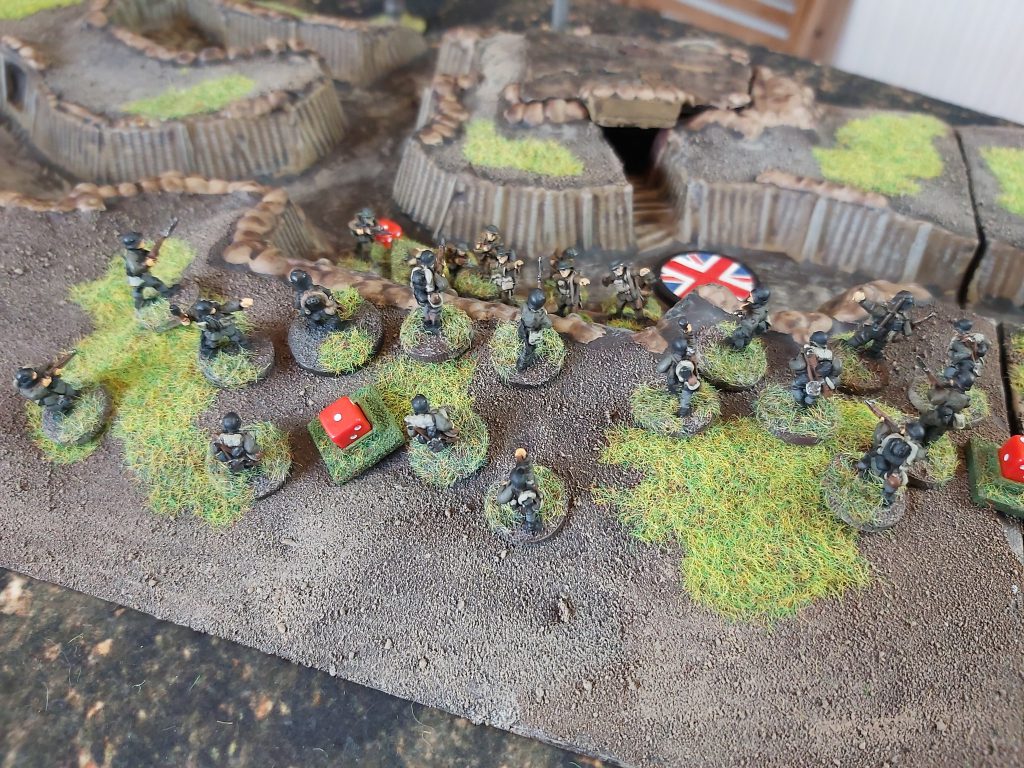
We’d like to thank Alex Sotheran for taking the time to come chat with us about his upcoming ruleset. As of this time, there is not a set publication date for Chain of Command: Great War, but we will continue to follow its development and look forward to its release.
If you’re interested in wargaming the Great War, Alex’s channel, Storm of Steel is an absolute treasure trove of information, guides, reviews, and battle reports.
Have any questions or feedback? Drop us a note in the comments below or email us at contact@goonhammer.com.
